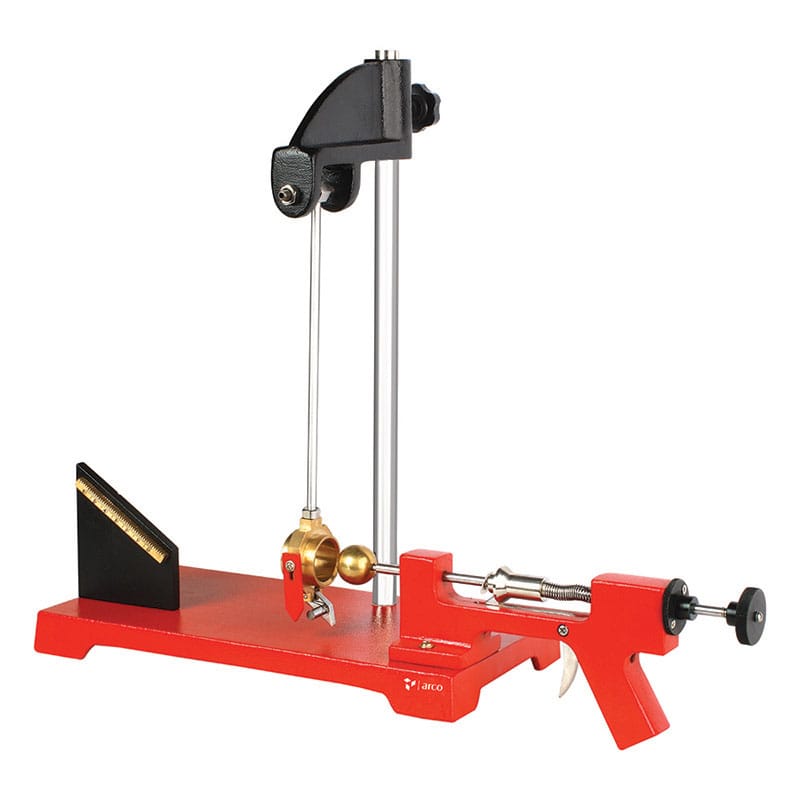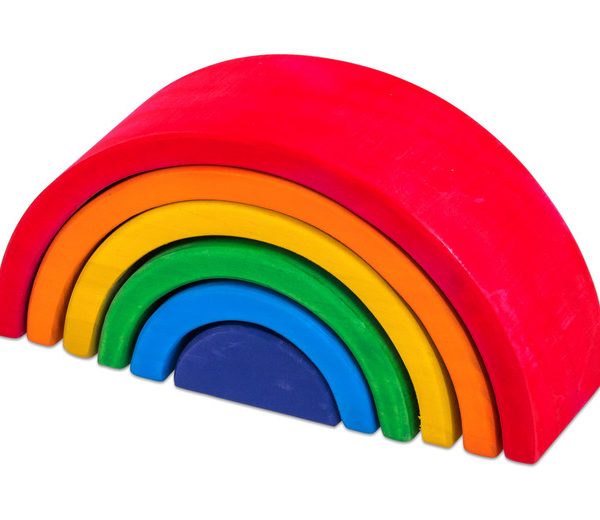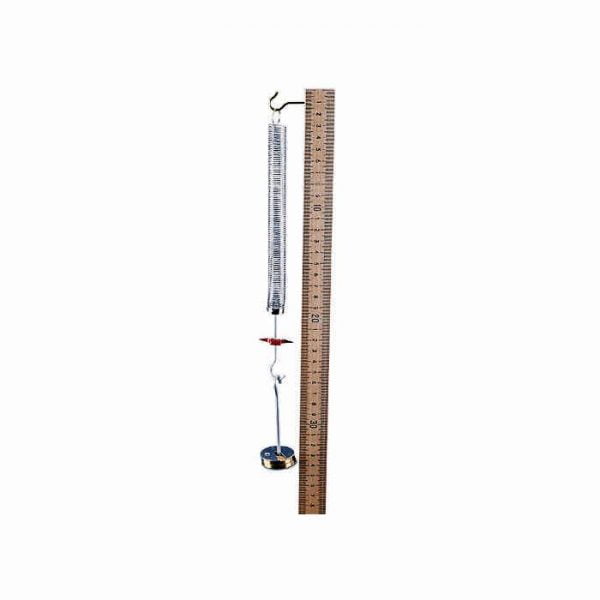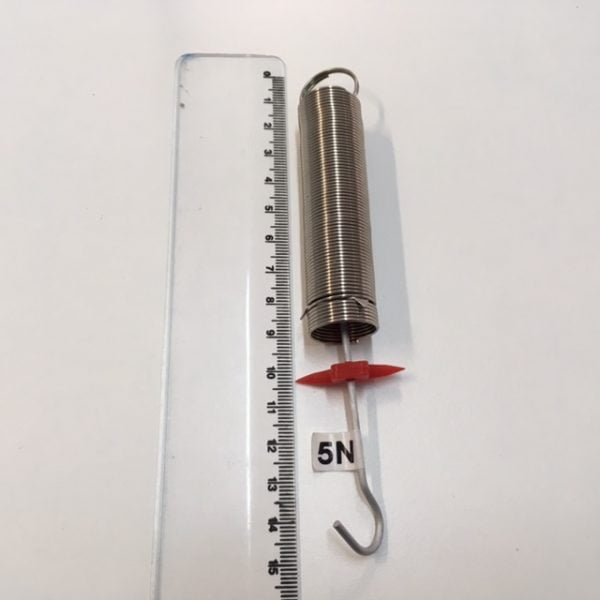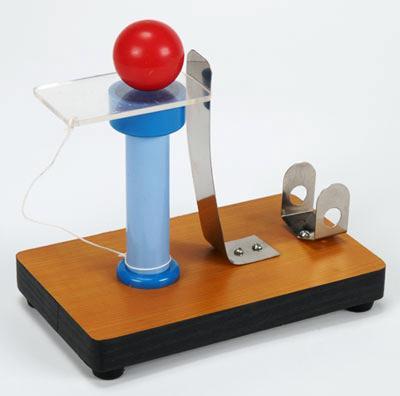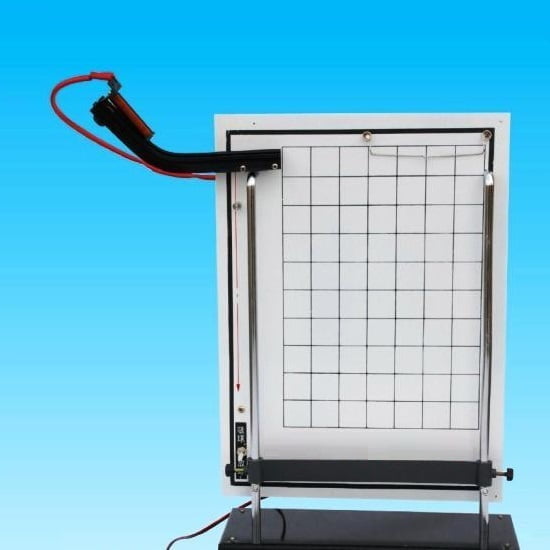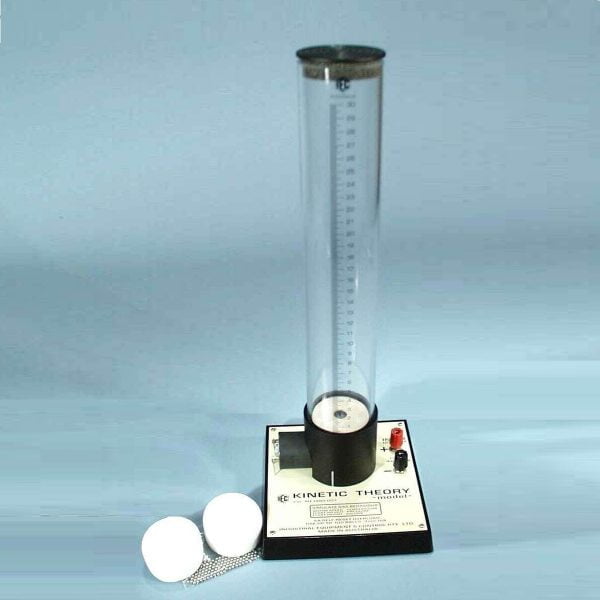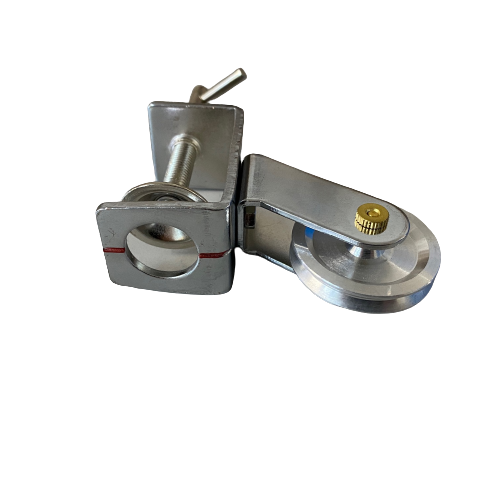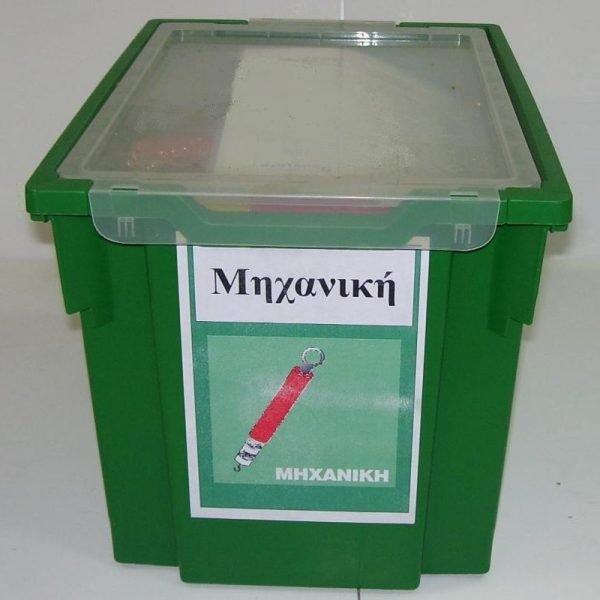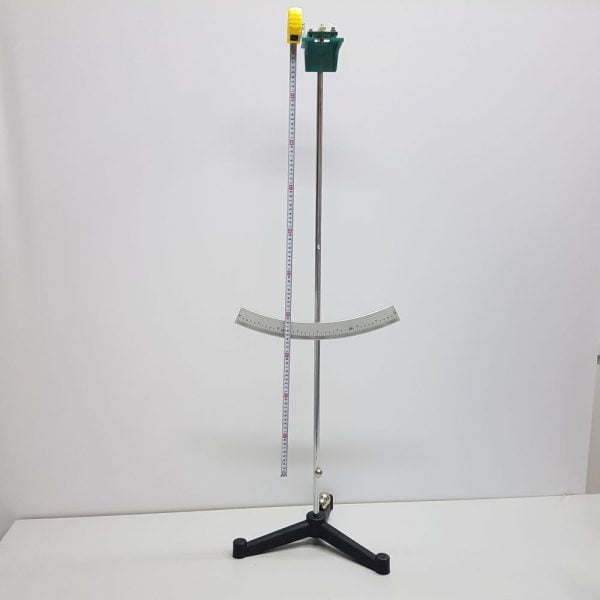Consists of a spring loaded launcher from which a ball can be launched horizontally and a block to catch the ball. The block is attached to a free swinging pendulum that moves to a maximum height where a pointer delineates its highest point of ascension. From this height kinetic energy of launched projectile and the pendulem can be ascertained using principle of conservation of momention. Includes spring loaded launcher monted on base that has 3 setting for 3 launching speeds, penduleum and block, scale and pointer to indicate heighest point of swing and a set of 3 balls of 13mm diameter, one each of brass, steel and aluminum.
Accessory:
- 13mm Diameter Balls (Brass, MS, Aluminum) – 1 Set
Mechanical Specifications
- Dimensions L (450mm)xW (150mm)xH (400mm) approx.
- Weight 4.5kgs approx.
A ballistic pendulum is a device for measuring a bullet’s momentum, from which it is possible to calculate the velocity and kinetic energy.
The ballistic pendulum is still found in physics classrooms today, because of its simplicity and usefulness in demonstrating properties of momentum and energy. Unlike other methods of measuring the speed of a bullet, the basic calculations for a ballistic pendulum do not require any measurement of time, but rely only on measures of mass and distance.
In addition its primary uses of measuring the velocity of a projectile or the recoil of a gun, the ballistic pendulum can be used to measure any transfer of momentum. For example, a ballistic pendulum was used by physicist C. V. Boys to measure the elasticity of golf balls, and by physicist Peter Guthrie Tait to measure the effect that spin had on the distance a golf ball traveled


 Botzees
Botzees Keyestudio
Keyestudio Fischertechnik
Fischertechnik